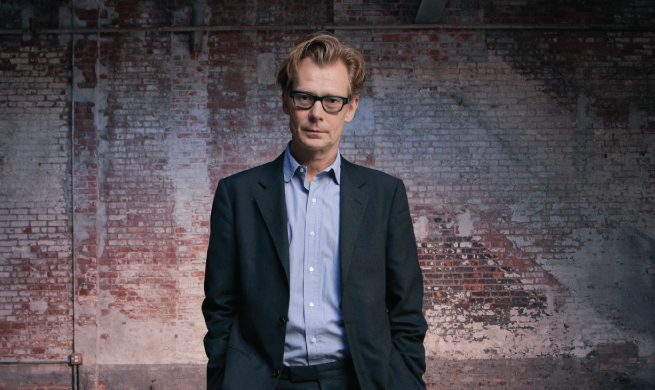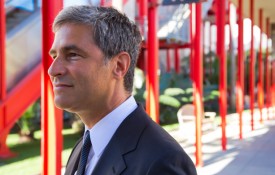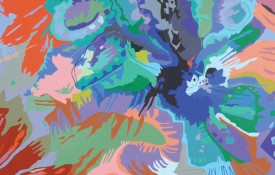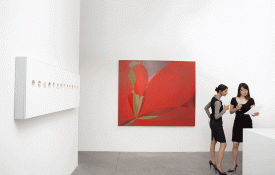In January, The Museum of Contemporary Art (MOCA) announced Philippe Vergne would be its new director, filling a void that was left open when the controversial Jeffrey Deitch stepped down after a tumultuous 3-year reign. The French-born Vergne is a veteran curator, whose background includes heading the Dia Art Foundation in New York for six years. On March 10 Vergne officially began at MOCA, and on March 29 the museum celebrated his appointment at its 35th anniversary gala. Weeks before his tenure started at MOCA, Vergne took a quick moment to offer his insight into the artistic vision for the museum’s future.
CSQ What is your first priority as the new director of MOCA?
PHILIPPE VERGNE It’s a set of priorities, actually. I think it’s extremely important to bring back MOCA’s program and make sure that the surrounding community understands the nature of it. I want to make sure that MOCA, through its collection, is the most inventive institution in this country. From its beginning establishment in 1979, MOCA has been at the institutional heart of innovation and that’s where we will continue to be.
Since being involved in art and working for institutions like the Dia Art Foundation, I’ve always considered artists to be the first executors – the first components – of the organization. Ensuring efforts between artists and patrons was a priority for me at Dia and continues to be here. MOCA has always been an institution interested in these artist relationships and that is absolutely necessary and natural.
For Mike Kelley, such an artist, I’m extremely happy that the first exhibition under my leadership is dedicated to him – one of the most important American artists, I believe. Mike has, for many years, been a true obsession for me, changing the way we look and think about art.
Another such artist I feel making an impact in the region is Kara Walker. Someone I’m very close to and someone whose work is extremely important, Kara not only helps us to understand art-making today, not only to understand America today, but to understand the world today.
CSQ What makes MOCA unique in comparison to other museums?
PV Hinted in its title, MOCA is a museum more of our time, a museum of now. Its collection is one of the most incredible collections of post-war art in this country, MOCA was started by artists. I don’t see many institutions in this country that can claim that
CSQ What contemporary artists are you particularly excited about?
PV The artist I’m most interested in is the one that is unknown – the artist I meet in a place I don’t know; from a picture I don’t understand. But I also think that the role of a museum like MOCA is to bring the world to Los Angeles’ door – to bring into the gallery art that we don’t quite yet understand. If you look at the collection of MOCA, that’s what it is; it’s a commitment to these artists from an early stage because they were there breaking some ground.
CSQ If you could assemble a “Dream Team” to assist in curating, who would you choose?
PV Harald Szeeman, Walter Hopps, and Peggy Guggenheim.















































